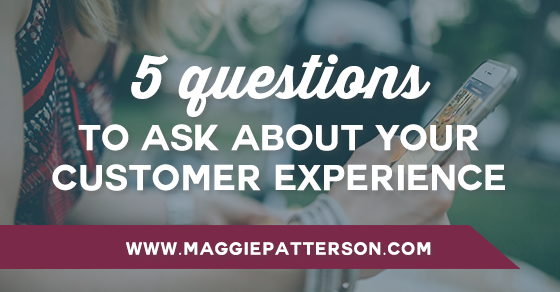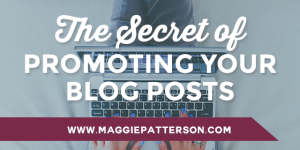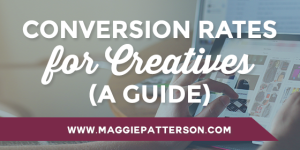 The concept of customer experience is nothing new. It’s been something of a trendy buzzword for the last several years, as companies focus more and more on ensuring their customers are satisfied, happy and keep coming back.
The concept of customer experience is nothing new. It’s been something of a trendy buzzword for the last several years, as companies focus more and more on ensuring their customers are satisfied, happy and keep coming back.
Customer experience doesn’t happen by chance. It takes research, design, testing and fine-tuning over and over again. Which is why so many companies struggle to actually deliver on the promise of customer experience ﹘ there’s simply too many places for a breakdown to occur.
It’s no wonder that even with the focus on customer experience, it’s still hard to find experiences that stand out. Take a second and think about the experiences you’ve had recently that rated higher than mediocre. (You’re probably struggling, right?)
Meanwhile, we’ve been conditioned as customers to expect more. Having a product or service isn’t adequate; what we’re really offering is an experience and story around that offering. So if you want to succeed, good enough is no longer good enough.
[Tweet “Because good enough isn’t good enough with customer experience. New post from @magspatterson.”]
Your business, no matter how big or small, needs to deliver on the promise of customer experience. Even as a small business. Even if you think you don’t have the time or money to deliver a great customer experience.
Customer experience is the #1 marketing strategy your business will ever have. Without focusing on customer experience, you’re missing the point. Getting new customers in your door isn’t going to matter if you don’t deliver what you promise or do what you say you’re going to do. End of story.
Customer acquisition cost is real. According to Kissmetrics, it can cost 7x more to acquire a new customer, and marketing budgets are typically focused on customer acquisition, not retention.
What if you could shift gears? What if you could spend less time and energy on acquiring new customers (aka on marketing) because your existing customers are happily sticking around and referring new customers to you?
It is possible. Many a successful small business has been built with next to no marketing budget. It all starts with creating a customer experience map.
Questions to Build Your Customer Experience Map
Before we dive into the questions you need to map out your customer experience, it’s important to note that your map is a living, breathing thing.
As you answer the key questions to create your map, keep in mind that it will grow and shift as your business evolves. Here’s the top five questions you should ask:
#1. How Do Customers Find You?
Customer experience starts from the second they first find you. So understanding exactly how they find you is key to figuring out what’s working in your marketing, what’s not, how to best position your product or service and more. If you’re not sure, just ask. This could be a simple question on a consult call or at the point of purchase. Knowing how they find you gives you additional insight into their behaviour and habits that make understanding them much easier.
#2. What Motivates Them To Engage With You?
We’re all motivated by different things, so you can’t assume that you know what will make them engage with you. Take your email opt-in, for example. What do they need from you to actually opt-in? What do they need to engage in the next step? Get inside their heads to find out if they’re motivated by making more money or making a difference.
#3. What Do They Need to Know Before They Purchase?
What moves someone from hanging out in your community or on your email list into purchasing? That question is likely one of the most powerful indicators of how you can create a winning customer experience. By answering the questions they have, making them feel comfortable with the idea of purchasing and then being happy to purchase from you can ensure that you create conditions for success and design an experience that feels good for them.
#4. What Happens When They Purchase?
If you’ve gotten them this far, you need to make sure you don’t blow it. There’s nothing worse than making a purchase and then having buyer’s remorse as you wonder what’s going to happen next. Breaking down this part of your process lets you ensure that the customer has the information they need and clearly understands what’s next.
#5. How Do You Engage Post-Purchase?
Once the purchase is made, you have a golden opportunity to continue doing business with the customer. So take time to map out what happens once they are done with your product or service. What do they buy next? How do you add value on an ongoing basis? How do stay in touch? Figuring out the various scenarios will help round out your customer experience map and ensure that your customers stick around.
When you’re creating your customer experience map, you want to include as much real-life data as possible. As a small business, you have the advantage of being able to gather and act on this feedback quickly.
Start by asking your customers for feedback on an ongoing basis and use it to fine-tune your efforts. When you receive negative feedback, look at where your customer experience needs a little bit of TLC. Schedule time monthly or quarterly to answer each of these questions so you’re on top of your customer experience map.
If you want to dive more into creating a customer experience map, you can get a free copy of the Surprise & Delight: How to Wow Your Customers Every Time Guide by entering your email below. It includes tips and tricks from 35+ successful small business owners.
And next week, we’ll be looking at how use these questions to create content your customers (and customers to be) really want.
[Tweet “New blog post: 5 Qs to answer about your customer experience from @magspatterson”]


